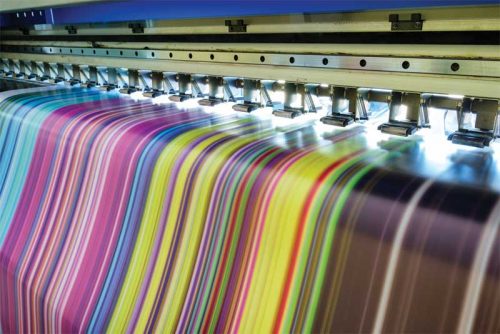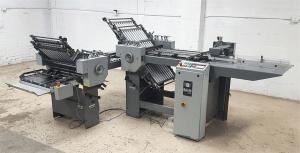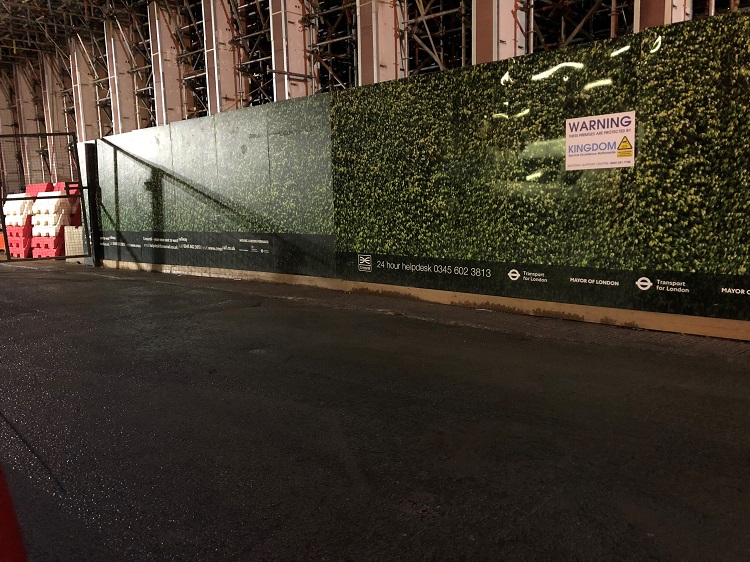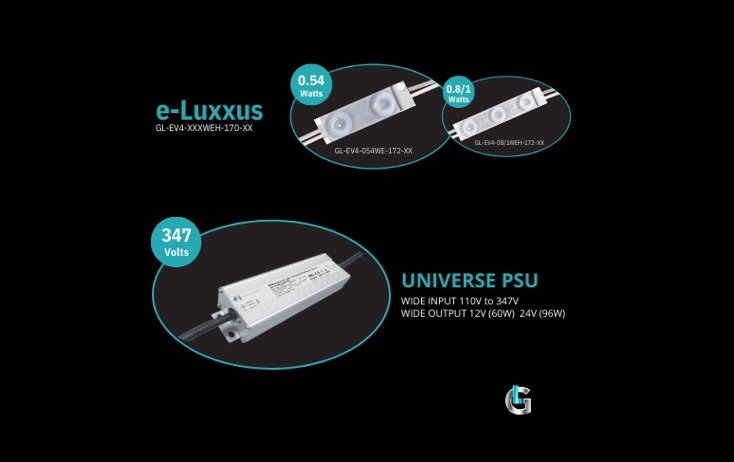The Visual Communication Space: How wide-format technology can help a printing business break new ground
Show customers what the business can do
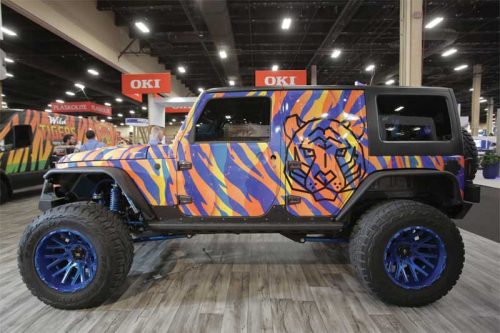
Custom displays can be used to create an eye-catching, and even interactive, experience in a variety of locations, including trade shows, events, conferences, retail stores, and office buildings.
Once a print business has maximized its efficiency by ensuring its hardware, software, and workflow are up-to-date, it is then time to show customers what they are capable of. Visual communications are everywhere, and they incorporate a vast array of text, images, logos, designs, colours, textures, and special effects. These elements can, and should, be leveraged to promote a business’s offerings and capabilities; PSPs need to think beyond printed signs. The subsections below provide some examples of visual communications.
Custom displays with integrated printed graphics
Custom displays can be used to create an eye-catching, and even interactive, experience in a variety of locations, including trade shows, events, conferences, retail stores, and office buildings. These displays are designed to draw the customer’s attention to a brand, product, or service with 3D elements and printed images, using rich, vibrant colours and textures. Integrated printed graphics, such as backdrops, window clings, and backlit displays, can be used to create an even more engaging customer experience.
Floor, window, and wall applications
Floor, window, and wallcoverings can be used in a range of settings for different purposes. In a retail store, they can be used to direct patrons to a specific area for product demonstrations, free samples, special sale items, educational workshops, raffles, etc. These visual elements can also be used in doctor’s offices, schools, libraries, law offices, and other public buildings as wayfinding signage to help visitors navigate their surroundings. Some of these images are designed for outdoor use to entice passersby to visit a store, event, or other location on a whim. This type of location-based marketing is a great way of attracting new customers who may not be aware of the business or its offerings.
Soft signage and fabric displays
Soft signage and fabric displays are lightweight, foldable, and reusable, making the products easy to transport, inexpensive to ship, and simple to assemble and store. Most importantly, soft signage has a higher-value look and feel. A few examples include pop-up displays, flags, banners, backlit displays, and point-of-purchase displays. This type of signage is typically printed using dye sublimation techniques, which produce vivid graphics with superb colour saturation, sharp text, and compelling images. Finished graphics can be washed, dried, and folded without damaging the print.
Colour is a key component of any brand’s identity; therefore, the ability to produce consistent, accurate colours across all phases of the printing process and through the raster image processor (RIP) is paramount.
Window graphics
Window graphics are a great way for physical establishments (e.g. restaurants, supermarkets, health clubs, etc.) to attract attention from local consumers. These graphics can be produced using vinyl or film, can be used indoors or outdoors, and are available for short-term or long-term display. Some graphics, such as window films, are easy to remove and come off clean, while others, such as etched glass film and contour-cut vinyl, are designed to last for years. Perforated window film is a unique application as its graphics can be seen from the outside of the building, but people who are inside can see right through the glass. Translucent vinyl graphics diffuse light evenly to produce vibrant colours and can be used with illuminated windows.
White and/or clear inks are highly recommended as they can transform any design into a stunning display. For example, in 2018, a digital printing innovation centre installed printed graphic film on all of the floor-to-ceiling glass doors and windows of its conference rooms. The window graphics were designed with white ink to create opacity and bold patterns. Clear inks were used in other parts of the design to create translucent areas within the frosted colour. The graphics were then printed onto a film, using a specialized hybrid flatbed/roll-fed printer. The finished output helped create a sense of privacy for meetings inside the conference room yet enabled visibility of movement outside. The rooms were also equipped with matching chairs and printed wallcoverings to complement the colourful design concept.
Industry expansion continues
Industry trends suggest the wide-format printing business has become much broader over the past several years, and lines that used to separate various establishments have begun to blur. As such, it is more important than ever for brand owners to develop a targeted marketing strategy. This approach allows businesses to think about the customers they do not need to reach just as much as they think about the ones they do hope to influence. PSPs can begin by asking themselves the following questions:
- Who are their current customers, and what products do they buy from the company? Are there any other areas the business could expand into based on consumers’ needs? Are there adjacent markets that might have a similar need for the company’s offerings?
- Who are the company’s competitors targeting? How can one set their business apart and avoid price-driven battles?
- What are the key features of the company’s offerings? Which consumers and/or businesses could benefit from these products? What are the best ways one can reach these prospects?
- Should one’s business target specific consumer demographics (e.g. age, gender, income level, family status) or business demographics (e.g. location, size, industry)?
Answers to these questions will enable a print provider to market their visual communications in the most effective way possible. Since the industry has become so vast, it is crucial the company’s sales personnel has a clear understanding of the business’s offerings, so they can effectively market them to customers and prospects. Clients will not be able to request services if they do not know they exist!
Eve Padula is the senior writer/editor for Keypoint Intelligence—InfoTrends’ business development strategies, customer communications, and wide-format consulting services. Her responsibilities include the promotion and distribution of content, assisting clients and channels in building business development programs, handling data analysis for forecasts and research reports, and managing the editing cycle for many types of deliverables. This article is based on a white paper she prepared for the International Sign Association (ISA) that was sponsored by Electronics for Imaging (EFI). For more information, visit www.signs.org.

